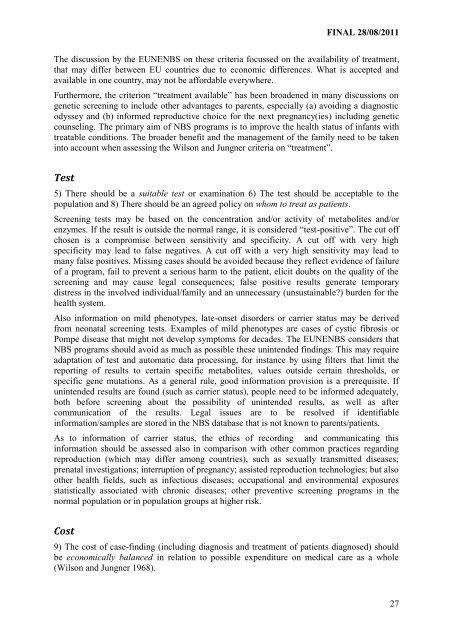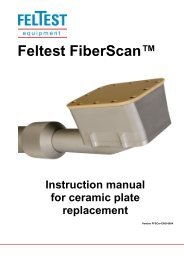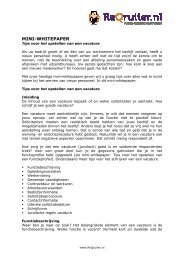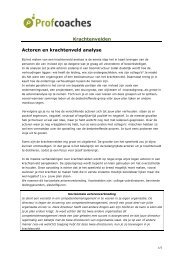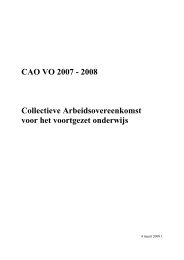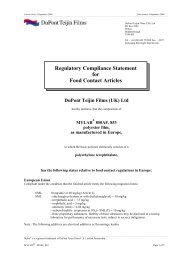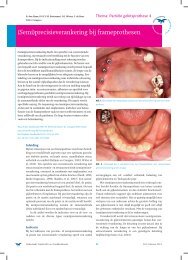Newborn screening in Europe Expert Opinion document
Newborn screening in Europe Expert Opinion document
Newborn screening in Europe Expert Opinion document
Create successful ePaper yourself
Turn your PDF publications into a flip-book with our unique Google optimized e-Paper software.
FINAL 28/08/2011The discussion by the EUNENBS on these criteria focussed on the availability of treatment,that may differ between EU countries due to economic differences. What is accepted andavailable <strong>in</strong> one country, may not be affordable everywhere.Furthermore, the criterion “treatment available” has been broadened <strong>in</strong> many discussions ongenetic <strong>screen<strong>in</strong>g</strong> to <strong>in</strong>clude other advantages to parents, especially (a) avoid<strong>in</strong>g a diagnosticodyssey and (b) <strong>in</strong>formed reproductive choice for the next pregnancy(ies) <strong>in</strong>clud<strong>in</strong>g geneticcounsel<strong>in</strong>g. The primary aim of NBS programs is to improve the health status of <strong>in</strong>fants withtreatable conditions. The broader benefit and the management of the family need to be taken<strong>in</strong>to account when assess<strong>in</strong>g the Wilson and Jungner criteria on “treatment”.Test5) There should be a suitable test or exam<strong>in</strong>ation 6) The test should be acceptable to thepopulation and 8) There should be an agreed policy on whom to treat as patients.Screen<strong>in</strong>g tests may be based on the concentration and/or activity of metabolites and/orenzymes. If the result is outside the normal range, it is considered “test-positive”. The cut offchosen is a compromise between sensitivity and specificity. A cut off with very highspecificity may lead to false negatives. A cut off with a very high sensitivity may lead tomany false positives. Miss<strong>in</strong>g cases should be avoided because they reflect evidence of failureof a program, fail to prevent a serious harm to the patient, elicit doubts on the quality of the<strong>screen<strong>in</strong>g</strong> and may cause legal consequences; false positive results generate temporarydistress <strong>in</strong> the <strong>in</strong>volved <strong>in</strong>dividual/family and an unnecessary (unsusta<strong>in</strong>able?) burden for thehealth system.Also <strong>in</strong>formation on mild phenotypes, late-onset disorders or carrier status may be derivedfrom neonatal <strong>screen<strong>in</strong>g</strong> tests. Examples of mild phenotypes are cases of cystic fibrosis orPompe disease that might not develop symptoms for decades. The EUNENBS considers thatNBS programs should avoid as much as possible these un<strong>in</strong>tended f<strong>in</strong>d<strong>in</strong>gs. This may requireadaptation of test and automatic data process<strong>in</strong>g, for <strong>in</strong>stance by us<strong>in</strong>g filters that limit thereport<strong>in</strong>g of results to certa<strong>in</strong> specific metabolites, values outside certa<strong>in</strong> thresholds, orspecific gene mutations. As a general rule, good <strong>in</strong>formation provision is a prerequisite. Ifun<strong>in</strong>tended results are found (such as carrier status), people need to be <strong>in</strong>formed adequately,both before <strong>screen<strong>in</strong>g</strong> about the possibility of un<strong>in</strong>tended results, as well as aftercommunication of the results. Legal issues are to be resolved if identifiable<strong>in</strong>formation/samples are stored <strong>in</strong> the NBS database that is not known to parents/patients.As to <strong>in</strong>formation of carrier status, the ethics of record<strong>in</strong>g and communicat<strong>in</strong>g this<strong>in</strong>formation should be assessed also <strong>in</strong> comparison with other common practices regard<strong>in</strong>greproduction (which may differ among countries), such as sexually transmitted diseases;prenatal <strong>in</strong>vestigations; <strong>in</strong>terruption of pregnancy; assisted reproduction technologies; but alsoother health fields, such as <strong>in</strong>fectious diseases; occupational and environmental exposuresstatistically associated with chronic diseases; other preventive <strong>screen<strong>in</strong>g</strong> programs <strong>in</strong> thenormal population or <strong>in</strong> population groups at higher risk.Cost9) The cost of case-f<strong>in</strong>d<strong>in</strong>g (<strong>in</strong>clud<strong>in</strong>g diagnosis and treatment of patients diagnosed) shouldbe economically balanced <strong>in</strong> relation to possible expenditure on medical care as a whole(Wilson and Jungner 1968).27


